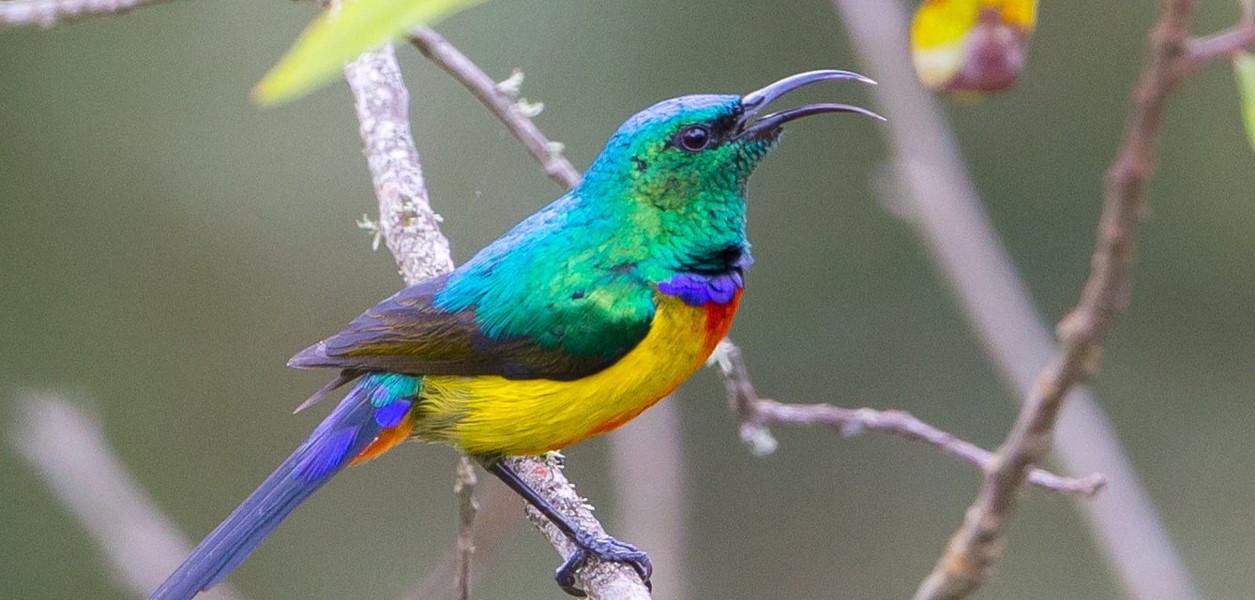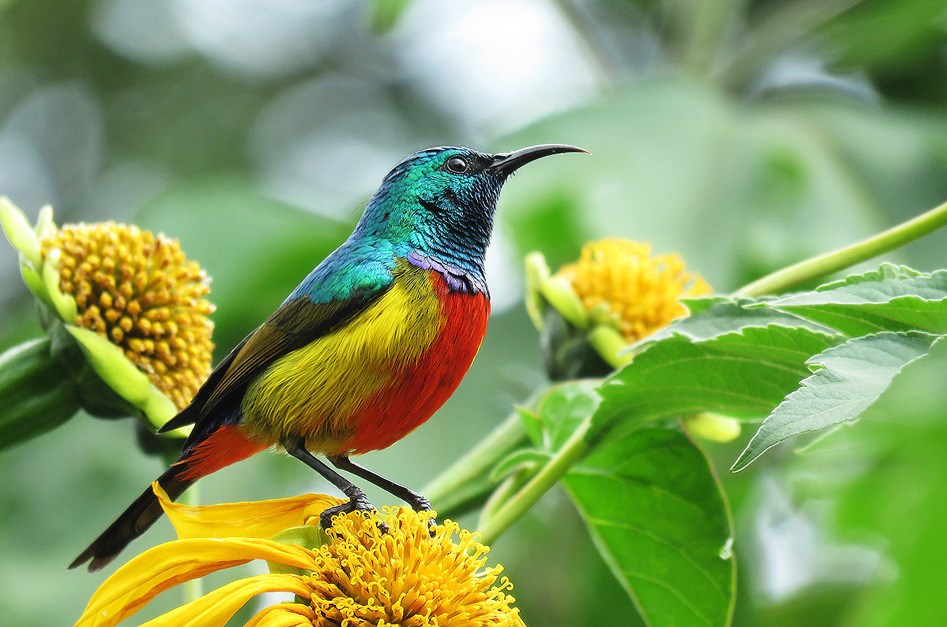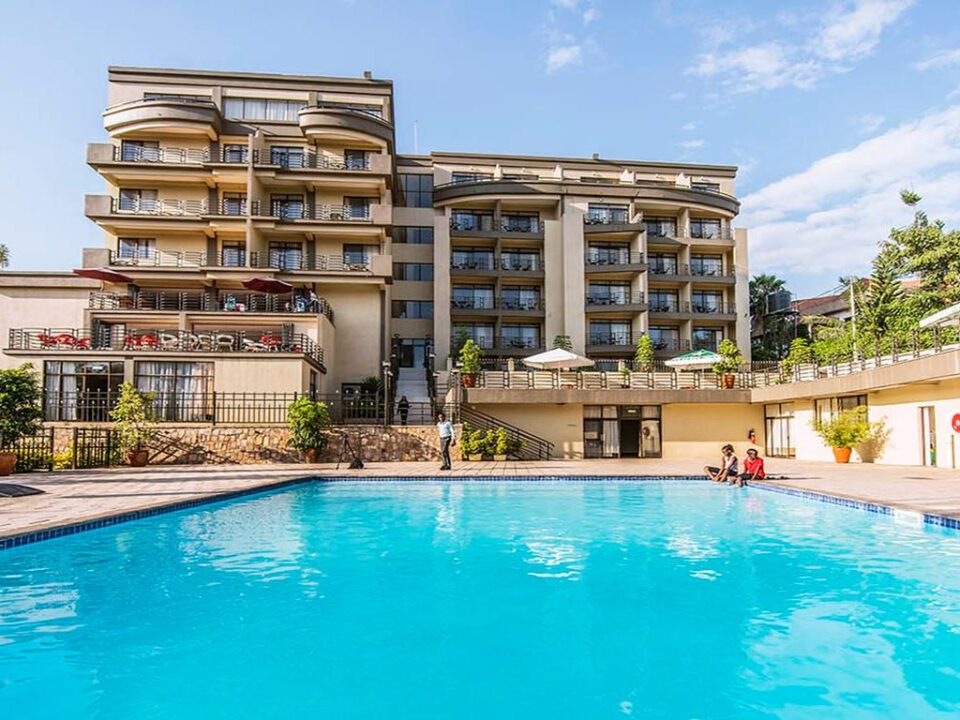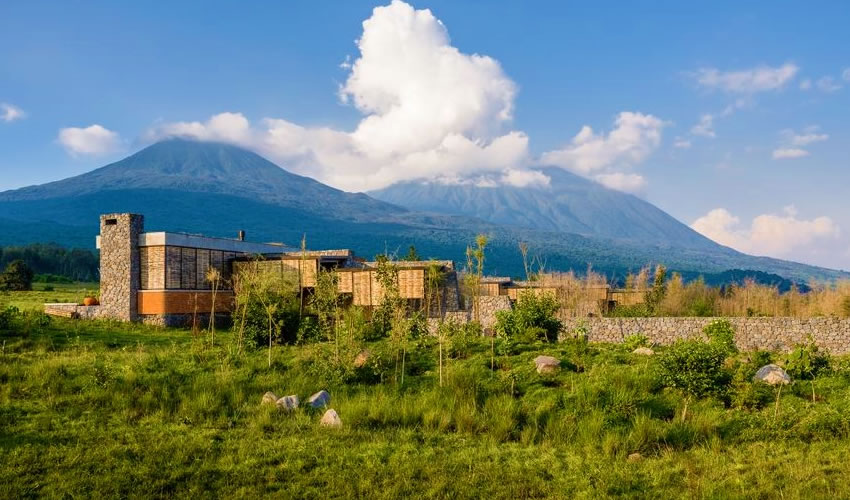- GET IN TOUCH WITH US:
- +256 753518160
- +256 777842166
- info@experiyatourcompany.com

How do I get from Nyungwe to Kigali?
November 14, 2025
Can I rent a car and self-drive around Rwanda?
November 14, 2025What’s the Best Time for Birding in Rwanda?
Rwanda, the “Land of a Thousand Hills,” is one of Africa’s most rewarding birding destinations. With a landscape that transitions from high-altitude volcanoes and dense montane forests to sweeping savannahs, wetlands, lakes, and lowland plains, Rwanda offers an astonishing diversity of habitats. These ecosystems host more than 700 bird species, including Albertine Rift endemics, forest specialists, wetland birds, savannah species, and rare migratory visitors. For birders, both novice and professional, Rwanda is a paradise filled with year-round opportunities. But many travelers still ask: What’s the best time for birding in Rwanda? The answer depends on what you want to see, but Rwanda remains a spectacular birding destination throughout the year with certain months offering peak activity and migration opportunities.
Understanding the best time for birdwatching in Rwanda requires exploring the country’s seasonal patterns, regional ecosystems, and the unique behaviors of its most sought-after species. Whether your focus is on Albertine Rift endemics like the Rwenzori turaco or the handsome francolin, migratory birds, or wetland specialties such as the papyrus gonolek and the elusive shoebill stork, knowing when to travel can elevate your birding experience to remarkable heights.
Understanding Rwanda’s Climate and Seasons for Birding
Rwanda has a generally mild, temperate climate due to its higher elevation, but it experiences two major dry seasons and two wet seasons each year. These seasons significantly influence bird activity, vegetation density, breeding patterns, and visibility.
Rwanda’s seasons include:
Long Dry Season: June to September
Short Dry Season: December to February
Long Wet Season: March to May
Short Wet Season: October to November
Birding can be done in all these seasons, but certain periods offer better conditions depending on your specific goals—whether it’s photographing birds, spotting migratory species, or searching for rare forest-dwelling endemics.
Birding in the Dry Season (June to September)
The long dry season is widely considered the best time for birding in Rwanda, especially for general birdwatching, photography, and exploring savannah or wetland habitats.
During the dry months:
Vegetation becomes thinner, improving visibility in forests and savannahs.
Birds gather near water sources, making them easier to locate.
Trails in Nyungwe Forest and Volcanoes National Park become more accessible.
Road conditions throughout the country are excellent.
This season is especially excellent for birding in Akagera National Park, home to savannah birds like the lilac-breasted roller, grey crowned crane, Meyer’s parrot, lappet-faced vulture, martial eagle, woodland kingfisher, and countless others. The drier conditions concentrate birds around lakes and wetlands, giving birders spectacular opportunities on boat safaris, especially on Lake Ihema.
In Nyungwe Forest, the dry season still offers prime opportunities to observe forest species, although some endemics may be more active during wetter months.
Birding in the Short Dry Season (December to February)
Rwanda’s shorter dry season is also ideal for birding, particularly for bird photographers seeking perfect lighting and clear skies. Many species are active and visible, and the pleasant weather makes forest treks more comfortable.
This season is also a great time for seeing certain species during breeding displays and territorial calls, especially in the montane forests.
Birding in December–February is excellent in:
Volcanoes National Park
Nyungwe Forest National Park
Gishwati-Mukura National Park
Akagera’s wetlands and savannahs
Urban green spaces around Kigali
The short dry season is slightly greener than the long dry season, meaning landscapes remain photogenic without the challenge of dense vegetation.
Birding in the Wet Seasons (March to May & October to November)
The rainy seasons in Rwanda might seem like a tricky time for birdwatchers, but they are actually some of the best months for serious birders, especially for those focused on Albertine Rift endemics and forest species.
Why the wet season is excellent for birding:
It marks the breeding season for many resident species.
Birdsong increases dramatically during early mornings.
Migratory birds arrive from Europe and Asia from September to April.
Forests become more alive with activity, calling, nesting, and territorial displays.
The challenges include muddy trails, unpredictable showers, and reduced road access to certain areas. However, birding remains extremely rewarding for those prepared to brave the conditions.
The wet seasons are especially good for:
Albertine Rift Endemics in Nyungwe
Rare species in Gishwati-Mukura
Wetland birds in Akagera
Migratory birds throughout the country
Experienced birders often choose the wet season for its high reward-to-effort ratio.
Best Seasons for Specific Birding Interests in Rwanda
To truly understand the best time for birding in Rwanda, it helps to break down the experience by key birding goals.
Best Time for Albertine Rift Endemics
Albertine Rift species like the Rwenzori batis, red-collared mountain babbler, regal sunbird, and handsome francolin are found mainly in Nyungwe and Gishwati-Mukura.
Best months:
March–May (wet season)
October–November
These months coincide with breeding periods when endemic species are more vocal and visible.
Best Time for Migratory Birds
Rwanda welcomes migratory birds from Europe, Northern Africa, and Asia.
Best months:
November–April
Akagera’s wetlands are especially productive during this period, with dozens of migratory species stopping over.
Best Time for Savannah Birding in Akagera
Akagera’s savannah birds are active year-round, but visibility peaks during the dry months.
Best months:
June–September
December–February
These months offer the best lighting, visibility, and road conditions.
Best Time for Shoebill and Wetland Species
The elusive shoebill stork, papyrus gonolek, Carruthers’ cisticola, and white-winged swamp warbler thrive in wetland environments.
Best months:
June–September
December–February
Best Time for Bird Photography
Dry seasons provide the best lighting and visibility.
Optimal months:
June–September
December–February
However, serious photographers enjoy the wet season for unique lighting conditions and increased activity.
Rwanda’s Top Birdwatching Locations and Their Best Seasons
Nyungwe Forest National Park
One of Africa’s richest birding forests with over 300 species.
Best time: Wet seasons for activity; dry seasons for easier trekking.
Volcanoes National Park
Excellent for montane bird species.
Best time: Both dry seasons for visibility.
Akagera National Park
Home to over 500 species.
Best time: Dry months, especially June–September.
Gishwati-Mukura National Park
Great for rarities and Albertine Rift species.
Best time: Wet seasons for high bird activity.
Lake Kivu Regions
Great for waterbirds and forest-edge species.
Best time: Year-round; clear skies during dry seasons help photography.
Kigali Urban Birding
Surprisingly rewarding with kingfishers, sunbirds, weavers, turacos, and raptors.
Best time: Year-round.
Practical Tips for Birding in Rwanda
Wear waterproof boots during wet seasons.
Bring binoculars (8×42 or 10×42).
Carry a bird guidebook or mobile app.
Hire an expert birding guide—they know the calls, nests, and hotspots.
Dress in earth-tone colors.
Start early—birds are most active at dawn.
Plan multi-day visits to Nyungwe and Akagera for maximum sightings.
Why Rwanda Is a Year-Round Birding Destination
Rwanda’s compact size, excellent roads, diverse habitats, and strong conservation policies make it one of the most accessible and productive birding destinations in Africa. You can travel between montane forest and open savannah within a single day—something few African countries offer.
Whether you visit during the green season or dry season, Rwanda offers:
Rare birds
Endemic species
Stunning landscapes
Easy logistics
Knowledgeable birding guides
High species density compared to country size
The country’s birdlife remains active and spectacular throughout the year, making it a paradise for birding enthusiasts.




